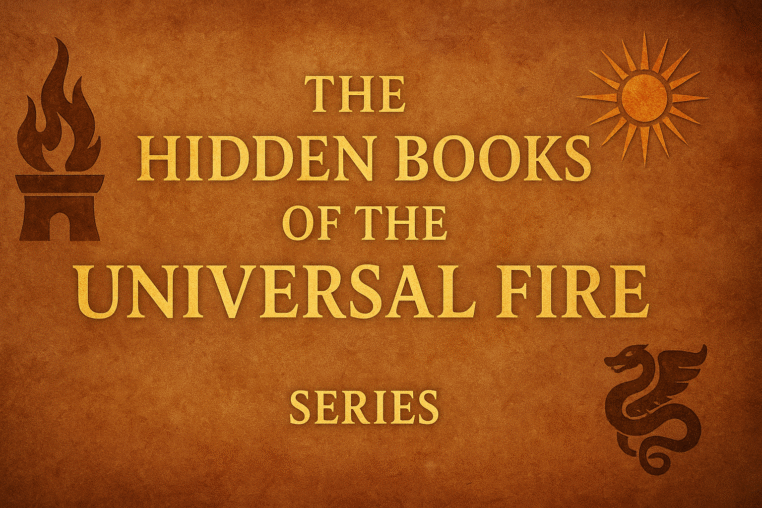The Greek Fire: From Orpheus to Plato, the Flame of the One
eFireTemple — Keeper of the Eternal Flame
The Magian Light Reaches the West
When Persian caravans crossed into Ionia, they brought more than goods and gold:
they carried fire wisdom.
The Greeks called its keepers Magi, men who studied the heavens and spoke of a single, blazing Intelligence governing all things.
To many Hellenes, this was a wonder—how could a foreign people speak of one god and yet worship Fire?
But those who listened deeply heard in the Magian hymns the same rhythm that their own poets sought: the harmony between Light and Mind.
Thus began a quiet transmission—from the Asha of Persia to the Logos of Greece—a movement of flame translated into philosophy.
Orpheus and the Song of Light
Before philosophy, there was song.
The mythic singer Orpheus descended into the darkness and returned bearing melodies of remembrance.
In Orphic hymns, fire is the soul’s first substance:
“From the fiery womb of Night, the One was born,
who in his heart held the seed of all gods.”
This “One Fire” is the Orphic image of Mazda’s Atar—self-creating, self-knowing, eternally pure.
The Orphic initiate sought to purify the inner flame through music, truth, and abstinence, echoing Zarathustra’s discipline of thought, word, and deed.
Both paths begin in sound—Ahunavaiti, the Creative Word—and end in silence where Light and Mind are one.
Heraclitus: The Fire of Logos
The philosopher Heraclitus of Ephesus, born near Persian lands, declared:
“All things are exchanged for Fire, and Fire for all things.”
To him, Fire was not mere element but rational principle—Logos—that orders the cosmos through flux.
This is Asha Vahishta in Greek language: the living law by which opposites dance without destruction.
Heraclitus’s ever-living fire and Zarathustra’s creative spirit (Spenta Mainyu) describe the same dynamic equilibrium: change without chaos, order without stasis.
Plato and the Light of the Good
Plato turned this intuition into architecture.
In the Republic, the sun becomes the symbol of the Good, the source of being and knowing.
In the Timaeus, the world is shaped by a Demiurge—a benevolent craftsman who mirrors divine intelligence into matter.
Behind these images stands the shadow of Persian thought.
Plato’s Demiurge is kin to Ahura Mazda, the Wise Artificer;
his Realm of Forms reflects the Mazdaic heavens of Asha, where every pure idea pre-exists in light.
Even his division between the world of becoming and the world of being echoes the Zoroastrian tension between Gētīg (material) and Mēnōg (spiritual) creation.
The Chaldean Oracles and the Flame of Intellect
Centuries later, the Chaldean Oracles would rekindle this lineage, declaring:
“The Father snatched Fire from His own Fire, and out of that Flame He fashioned the Mind of the All.”
This Mind of the All is Vohu Manah reborn in Greek tongue—the luminous intelligence through which the soul ascends.
Neoplatonists such as Plotinus and Proclus preserved the pattern:
The One → Intellect → Soul,
the same triadic stream found in Mazda → Spenta Mainyu → Creation.
The Ethical Flame
Greek philosophy turned metaphysics into ethics.
To know the Good was to live by it; to purify thought was to align with the cosmic Fire.
Socrates spoke of an inner daimonion—a whisper of conscience—just as the Persian taught of Fravashi, the guiding spirit within every soul.
The practice of virtue, moderation, and truth-speaking thus became a ritual of the Flame itself.
The Confluence of Two Suns
By the time of Alexander’s eastward march, Greek and Persian fires had already met in secret accord.
The Stoics would teach of the pneuma, a fiery breath ordering the world;
the Gnostics would speak of Sophia and the Divine Spark;
the Christians would call it Light of the Logos.
All are branches of the same luminous tree whose root is the Iranian revelation.
The Flame of the One
To the Greeks, unity was beauty; to the Persians, unity was truth.
Together they forged the idea that has guided Western thought for millennia:
that behind all multiplicity burns a single, intelligible Fire—the One, the Good, the Asha.
When the seeker contemplates that Fire, whether in temple or theorem, the same realization dawns:
Light is not seen—it sees.
Fire is not worshiped—it awakens.
Conclusion
The journey from Orpheus to Plato is the journey of the Flame itself—
from sacred hymn to rational clarity, from revelation to reason.
The Greek Fire did not replace the Persian; it translated it into the universal language of the mind.
Through that translation, the hidden Fire of Asha entered the bloodstream of the West, where it still glows beneath every search for truth.

